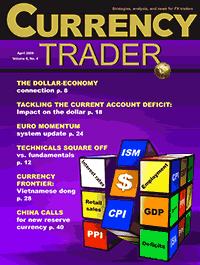WEEKLY OUTLOOK - Week of December 26, 2010
Highlights
European debt woes continue to weigh on EUR into 2011
Metals poised to perform well in the year ahead
Asia growth to power regional FX, except Kiwi
Oil prices supported by growth outlooks and tightening supply
Key data and events to watch next week
European debt woes continue to weigh on EUR into 2011
The Euro looks set to finish out the year towards its recent lows. Looking ahead into the New Year, we expect further Euro weakness to develop as European leaders appear unable to develop a comprehensive solution to the regions debt crisis. The debate is between certain national governments, with Germany at the fore, rejecting the need for closer fiscal integration (i.e. Eurobonds) and the ECB, which is left holding the bag, compelled to buy unwanted peripheral government bonds. This puts the ECB in the awkward position of propping up potentially insolvent sovereigns, threatening its own balance sheet and credibility, suggesting the ECB may soon step back from bond purchases and let markets do what they will, which would not be pretty for the Euro. Should the ECB bite the bullet and continue asset purchases, markets will cry 'quantitative easing' and also punish the Euro. Absent a comprehensive solution, the debt crisis appears set to see further Euro weakness in the months ahead. We think a move below the 1.2950/1.3000 area will see a slide toward 1.25/26 in relatively short order.
In contrast to Europe's travails, the US outlook is continuing to improve, aided in no small part by recently approved tax cut extensions and additional stimulus measures. But the USD will likely be restrained by concerns over rising deficits, suggesting the greenback will not see a straight line higher. Instead, we think much of 2011 will continue to see major developed currency (EUR, USD, GBP, and JPY) weakness relative to outperforming minor currencies (AUD, CHF, NOK, SEK, ZAR and MXN). Given that positioning on such trades is somewhat elevated, we will look for opportunities to re-enter on corrections.
Metals poised to perform well in the year ahead
Our fundamental view for higher precious metal prices is driven by the continued low interest rate environment, renewed quantitative easing measures in the United States and further economic bailouts in the European Union. We envision a potential correction into the holidays, however we view this as a buying opportunity as we head into 2011. More specifically, 20 years worth of seasonal patterns suggest prices tend to bottom around the holidays and rally into the end of February before topping out and correcting lower throughout the month of March. We look for the gold-to-silver ratio to stabilize near current levels, thus we anticipate greater synchronization between the two precious metals going forward. Ultimately, we view the $1300-25 and $27-28 regions in gold and silver respectively to be an attractive area to establish a bullish bias whereby gold could rally towards $1,475 and silver could see $32-34 over the coming weeks and months.
Asia growth to power regional FX, except Kiwi
Inflationary pressures are likely to require policy action by the Peoples Bank of China in the New Year. We expect a gradual tightening by increases to the reserve requirement ratio and benchmark rates however this is not likely to significantly impact the Q1 growth outlook for the world’s second largest economy. While tightening is likely to see periodic setbacks in risk sentiment, we believe these setbacks will be short-lived and can be viewed as buying opportunities. The Australian economy, which is strongly tied to the Chinese economy, continues to show strong employment growth however below trend GDP and above average lending rates suggest no change in the policy rate into Q1. The AUD is likely to remain firm though it is vulnerable to economic shifts in China’s economy.
We expect the New Zealand dollar to underperform as the RBNZ takes a more dovish stance. With rates expected to remain low amid weaker consumption and investment as well as elevated exchange rates weighing on exports, the NZD is likely to come under pressure. QoQ GDP for the third quarter released on Thursday showed a contraction of -0.2% and the prior quarter’s growth of +0.1% was revised lower from +0.2%. This indicates a softer economy which is likely to weigh on NZD should the weakness persist.
Oil prices supported by growth outlooks and tightening supply
The front month WTI crude oil contract ascended to fresh 2 year highs, a phenomenon that has occurred on multiple occasions in Q4, to $91.63/bbl on the eve of Christmas Eve. Marked demand growth alongside tightening supply have been the main drivers behind oil’s recent ascent. The December IEA Oil Market Report revised global oil demand forecasts higher by +260,000 bbl/d, an expected annual increase of +1.6%. On the supply side, weekly DOE US stockpiles have repeatedly surprised to the downside – the most recent December 23rd release saw inventories decline -5.3M/bbl versus expectations of -3.4 M/bbl.
Improving global growth outlooks have also added to upside oil price potential. US growth prospects have made lengthy strides on the back of positive data surprises alongside accommodative policy implementations. ISM manufacturing figures have trended higher in Q4 as has ISM non-manufacturing. Labor conditions, however, have shown signs of weakening as evidenced by the uptick in the November unemployment rate and negative data surprises from both components of the November Payrolls report. This is partially offset by the growth in the employment component of non-manufacturing ISM which has shown tightening correlations to non-farm payrolls in recent years. On the policy front, the recent tax cut extensions alongside growth-accommodative Fed policy has resulted in per annum estimated revisions to US GDP of about +1%.
Current market developments indicate considerable oil market tightening has been set in motion. Accordingly, we have revised our oil outlook for Q1 2011 higher to an average of $88/bbl and expect prices to trade within an $80-100/bbl range. However, we acknowledge potential risks to our expected range emanating from geopolitical tensions from the Korean peninsula, possible euro-zone periphery implosion or contagion, shifts in China policy direction, and supply/demand surprises. Nevertheless, we maintain the view that a firming demand landscape will likely be the principal determinant supporting higher oil in Q1 2011.
Key data and events to watch next week
United States: Monday – Dec. Dallas Fed Manufacturing Index Tuesday – Oct. S&P/Case Shiller Home Price Index, Dec. Consumer Confidence, Dec. Richmond Fed Manufacturing Index, Thursday – Weekly Jobless Claims, Dec. Chicago PMI, Nov. Pending Home Sales
Euro-zone: Wednesday – EZ Nov. M3 Annual Growth Rate, German Dec Preliminary CPI
United Kingdom: Wednesday to Friday – Dec. Nationwide House Prices
Japan: Monday – Nov. Corporate service price index, Nov. vehicle production, Nov. housing starts, Nov. construction orders Tuesday – Dec. small business confidence, Nov. jobless rate, Nov. overall household spending, Dec. Tokyo CPI, Nov. National CPI, Nov. industrial production, Nov. retail trade, Nov. labor cash earnings Thursday – Dec. Nomura manufacturing PMI
Canada: Wednesday – Oct. Teranet/National bank HPI Tuesday – November CPI, October retail sales Thursday – October GDP
Australia: Friday – Nov. house price change, Nov. private sector credit
China: Monday – Nov. Industrial profits, Nov. leading index Friday – Dec. MNI business condition survey















0 comments:
Post a Comment